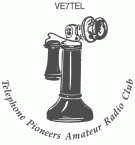 |
Some documents linked from this page may require Adobe Acrobat PDF reader.
Last Updated February 28, 2025
Telephone Pioneers Amateur Radio Club
NOTICE OF DISSOLUTION
Effective February 23, 2025, the Telephone Pioneers Amateur Radio Club has made the decision to wind down operations.
Over the coming months (depending on site access), digital repeaters will be removed from service.
The VE7TEL voice repeaters in Burnaby, BC will continue to operate, as the owneship is transitioned to the BC FM Communications Association.
It has been a fun 30+ year ride, but technology has marched on, and sites that we had access to in the past have been, or will be decommissioned in the near future. This has made it no longer feasible to continue operations.
Thank you for your support, and we hope you continue to explore the world of Amateur Radio.
Thank you for visiting!
Bandwidth and hosting provided by the BC Wireless Amateur Radio Network. |
